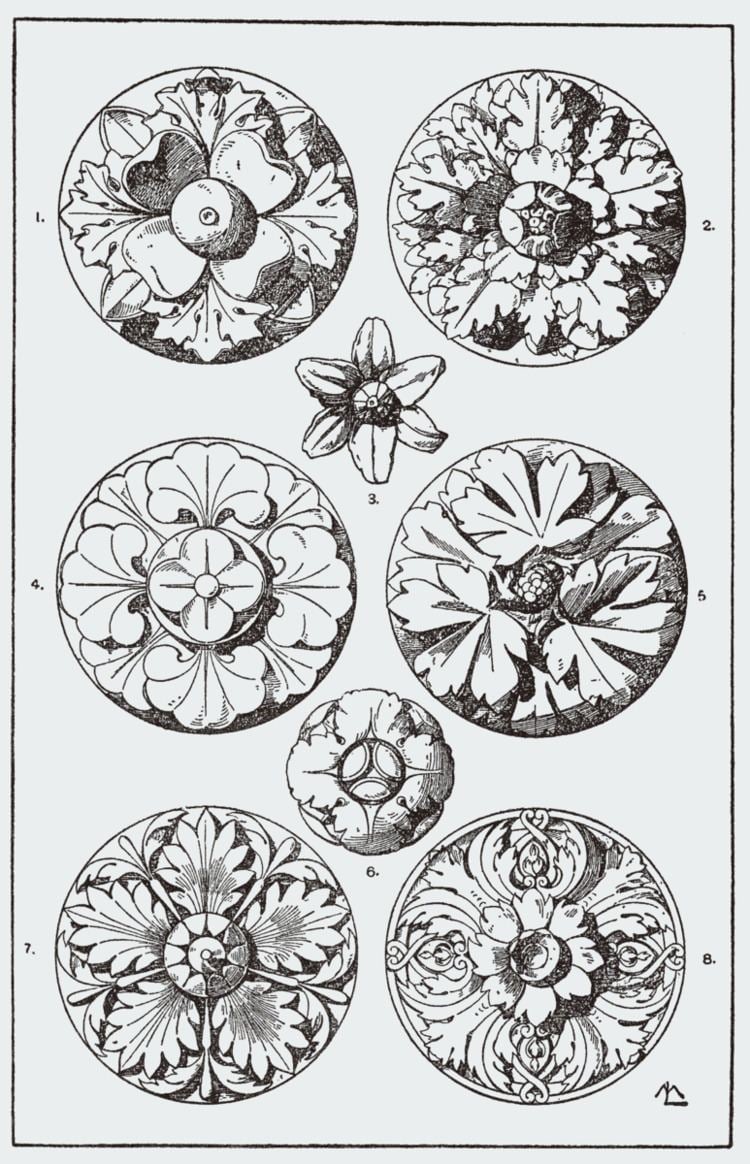 | ||
A rosette is a round, stylized flower design, used extensively in sculptural objects from antiquity, appearing in Mesopotamia and used to decorate the funeral stele in Ancient Greece. It was adopted later in Romaneseque and Renaissance, and also common in the art of Central Asia, spreading as far as India where it is used as a decorative motif in Greco-Buddhist art.
The rosette derives from the natural shape of the botanical rosette, formed by leaves radiating out from the stem of a plant and visible even after the flowers have withered. The formalised flower motif is often carved in stone or wood to create decorative ornaments for architecture and furniture, and in metalworking, jewelry design and the applied arts to form a decorative border or at the intersection of two materials.
Rosette decorations have been used for formal military awards. They are also used to decorate musical instruments, such as around the perimeter of sound holes of guitars.
Ancient origins
One of the earliest appearances of the rosette in ancient art is in early fourth millennium BC Egypt. Another early Mediterranean occurrence of the rosette design derives from Minoan Crete; for example, the rosette design has been found on the famed Phaistos Disc, recovered from the Phaistos archaeological site in southern Crete.
